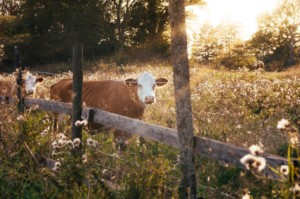Deadline Day?
I have noticed in social media posts and in conversations with clients that a lot of people use deadlines as a way to motivate themselves. Or at least the story they tell themselves, is that they need a deadline to ensure that they will actually work on a particular project and get a publication out of it…
What I also notice is that the deadline then creates opportunities to feel behind, to doubt your ability to do the job, and to overwork and skimp on basic self-care (sleep, good food, exercise). Sometimes the deadline and commitment also change how you feel about the project, turning something you were excited about into a chore that you now need to motivate yourself to stick with. For some people the very fact of having a commitment sets up resistance to doing the thing you now have to do.
Furthermore, your perceived need for deadlines and having people expecting the work from you can lead to a publications list that is imbalanced. This imbalance reveals itself in a higher number of chapters in edited books and contributions to special issues, with relatively few journal articles outside of special issues on broader topics that often take longer to form. It can also lead to getting a contract for a book earlier in the process than might be ideal, in order to have that external driver for actually working on it.
Learning lessons from cattle ranching.
This 2-part article in On Pasture magazine (an online magazine for livestock farmers which I used to subscribe to), is about moving cattle from one pasture to another:

Paddock Design and Stockmanship – Part 1
Paddock Design and Stockmanship – Part 2: The Case for Middle-Run Gates
The author, John Marble, acknowledges that most farmers put their gates at the corner of the field. They tell themselves (and each other) that this makes it easier to herd the cattle through the gate, because the fence along the side is like an extra herder.
It struck me that this corner gate + fence thing was analogous to the deadline and commitment to an editor. It is a very common practice. Lots of people can tell you how it works and how, despite the drawbacks, it’s just the most efficient and effective way to do it.
What doesn’t need to be said (but maybe it really does) is that cattle do not need to be forced to graze. If the conditions are right, they like nothing more than to hang out in a field of fresh grass and graze. They also frequently lean over the fence to try out the grass in the next field. Cows find the grass on the other side of the fence rather attractive.
Something similar could be said about your writing and research.
The things you write about are attractive to you. Given the right conditions, you don’t need to be forced to write; you are eager to think about and write about these things. The conditions just may not be right for you…
Freedom, structure, and pressure.
The fence that contains the pasture provides just enough pressure to keep the cattle in that field grazing the grass. Dividing your pasture into paddocks and moving cattle through gates allows you to make sure certain areas are neither undergrazed or overgrazed.
Just like the parts you like about your writing will get you writing and keep you writing, but you need some fence-like structures in your practice to ensure that you keep writing, even through some of the less attractive bits, so that you can submit your writing for publication.
You also need a gate-like structure in your practice to allow you to submit that paper and move on to the next one.
The information provided about cattle behaviour prompted me to think about the impact of these structures and when that structure becomes pressure. The fence is not really perceived as pressure by the cattle. They are able to move freely in the paddock, close enough to the rest of the herd without feeling crowded. There is enough grass for everyone.
It is at the point of moving the cattle to the next field that normal herding practice, with corner fences, and 3 herders working from behind the cattle, introduces pressure. Pressure changes cattle behaviour. These facts are not contested.
- What “every stockman knows” about herding cattle, treats this behaviour-under-pressure as normal and something to take into account when moving cattle.
- In a similar way, “every academic knows” how the pressure of a deadline affects how you work. Not only do you know that it helps you get things done, but you also know the negative effects that you need to manage.
You, like the cattle, often try to break free of where you are being herded. You develop a strong urge to go back to that part of the process where you were not under pressure and sometimes that means escaping the line and not going through the gate.
Someone will come to herd you through eventually. You may feel bad that you need the reminders and the extensions, but you also accept that this is just a normal part of the process.
Appropriate amounts of pressure.
In Part 2, John goes on to explain how his method, which other farmers routinely tell him “will never work”, actually works. It is based on reducing the pressure to only what is necessary to get the desired outcome. Instead of managing the problematic parts of cattle behaviour under pressure, he eliminates that behaviour by using middle-run gates & leading the cattle.
Instead of pushing cattle through the gate from behind and increasing pressure on the cattle and then managing the behaviour that results from pressure, he leads the cattle from the front. Because they are not under pressure, they don’t try to get away from him. Because they have a bit more personal space they don’t try to fan out. He spends some time training them to follow him (when they are young) and then relies on the general context to minimize unhelpful behaviour. He starts from what the cattle want to do: eat fresh grass and follow the rest of the herd. He builds his strategy from there.
You can do the same with your writing.
Like this farmer you can observe your own behaviour and identify what works. You can experiment with less pressured strategies to see how they work and tweak them to make them work better. You can figure out how to build on what you want to do to lead yourself from one project to the next, including submitting things for publication.
Like this farmer, you may see uses for the more pressured technique. (He does use those techniques when conducting health checks, giving vaccinations, etc.) It isn’t an either/or. You are looking for the appropriate amount of pressure at the appropriate time.
How can you make it easier?
Sometimes pressure is helpful. There is a point in your writing process where a deadline and a commitment will provide just enough pressure to get your paper submitted, so you can move on to something else. But it seems to me that a lot of academics have those 3 herders in the field all the time, making the cows nervous and affecting how they graze. No rancher is going to do that. Even with corner gates, they only put the pressure on when they need to move the cattle.
- Your normal writing process should only require a fence to keep you focused on this particular project.
- Your writing paddock needs to be big enough for you to move around and find the really good grazing material. And it needs to keep you there, while you hone your writing towards a specific output and some of the less succulent, but still nutritious, writing tasks that move you from exploring your own intellectual curiosity – to communicating a specific argument to a specific audience.
(For more on these stages of the writing process, check out my Short Guide: The Scholarly Writing Process.)
You can then decide whether or not you require the equivalent of a corner gate, side fence, or cowboys to push you through to actually submitting it.
Remember, what is on the other side is something you want. You may need to work out: what would lead you into the fresh pasture in a less pressured way? You may need to build your equivalent of a mid-run gate. And it may take a while to trust that the desire to bolt is not normal, but a result of pressure…
It is okay to need structure and a guide.
You do not need to figure out how to do all this without fences, gates, or the occasional cowboy on a horse directing your movements.
You are more autonomous than cattle, even if you have these things.
This is what I do!
Guide for the Journey is my individual coaching course in which I support you over 6 months as you figure out new ways of working and establish the techniques we craft for you together.
The Academic Writing Studio provides some structure, through weekly A Meeting With Your Writing sessions, and online classes that help you figure out what might work best for you. I offer some of these Live Classes for non members periodically, but access to regular quarterly group Live Classes is another perk of Studio membership.
Subscribe to my free newsletter for a monthly structure of reviewing and planning your work, notification of upcoming classes, and more articles like this one…
Related posts:
Is working at or beyond your limits really effective
Optimising Focus: The impact of time available on your focus
Are deadlines helping or hurting
You and writing deadlines: BFFs or toxic frenemies? – By Dr Peta Freestone
Updated 9 March 2020. Edited May 2021.






